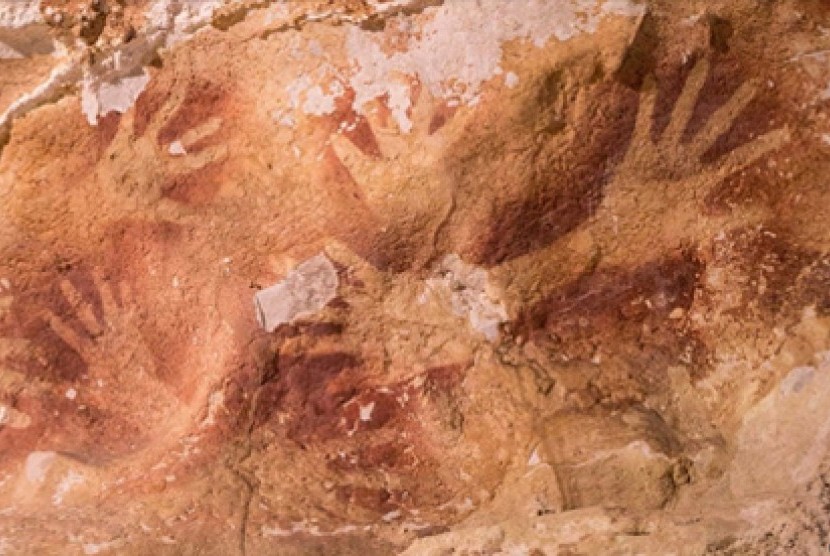REPUBLIKA.CO.ID, JAKARTA - Paintings found in some caves in Maros, Pangkep, South Sulawesi have drawn tremendous attentions among international scientists. Scientific examinations show that those paintings of hand prints and pigs dated up to 39.9 thousand years and 35 thousand year. The fact has made the paintings among the oldest cave paintings made by human species.
The new found cave paintings shed some lights on human evolution especially on their behaviors in the past, according to a written statement from Indonesia's National Archeology Center on Thursday, Oct 9. Scientists from Indonesia and Australia have worked together on the research on Maros' paintings.
"There is one big possibility that the paintings on the cave wall had developed during the early history when modern human spread From Africa to Europe and Southeast Asia," according to the written statement.
Earlier, archeologists believed that cave paintings in Europe were the oldest painting in the world. They did not expect that such paintings could be found outside Europe especially in tropical region like Indonesia.
Carbon dating examination show that Maros' paintings are as old as paintings found in Europe, or at least 40 thousand year old.
"It means that early modern human living in South Sulawesi were familiar with rock art, at the same era with development in Europe," the statement said.
Previously, international archeologists believed that the oldest cave wall painting was found in Europe. The finding was supported by non-figurative painting found in El Castillo site, Spain, which is estimated as old as 41 thousand years. While at the same era or around 39.9 thousand years ago, humans living in Sulawesi had made the figurative paintings of hand prints and animals like pig or anoa.
Maros' paintings have been published in a scientific journal, Nature. The publication put the finding on its front page including some articles.
Institutions involved in this research are Indonesian Archeology Center (Indonesia), Makassar's Cultural Conservation Agency (Indonesia), Makassar Archeology Agency (Indonesia), University of Wollongong (Australia), and University of Griffith (Australia).



